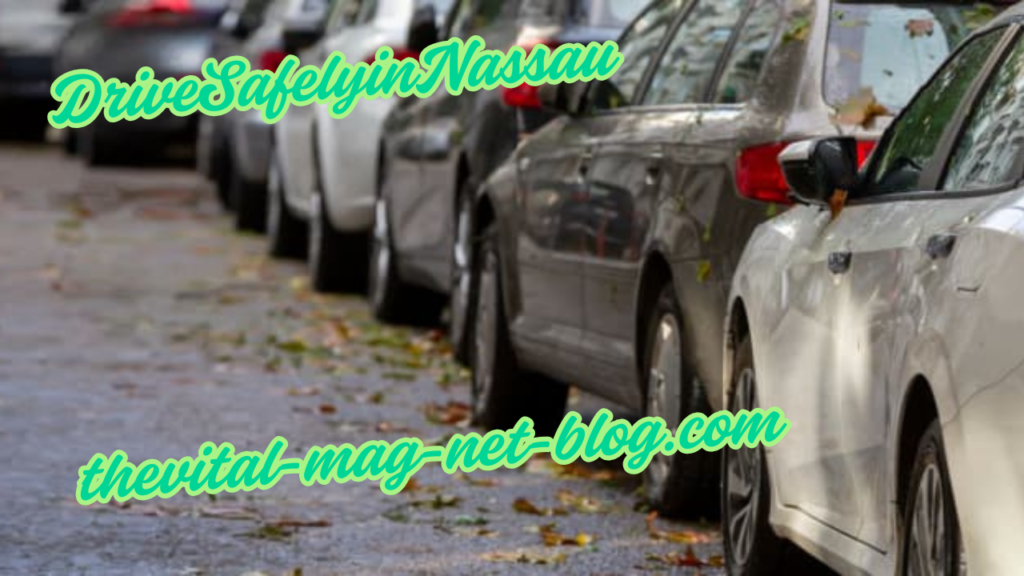DriveSafelyinNassau: Your Ultimate Guide to Navigating Nassau’s Roads with Care

The dynamic capital of The Bahamas, Nassau, is a city rich in culture, history, and stunning natural beauty. Driving in Nassau may be both thrilling and difficult, depending on whether you’re a local or a guest. Driving responsibly and securely is essential for negotiating congested roads and comprehending local traffic rules. You may travel safely around this beautiful island metropolis with the aid of our in-depth book, DriveSafelyinNassau: Your Ultimate Guide to Navigating Nassau’s Roads with Care and Confidence.
Understanding Nassau’s Road System

Get acquainted with the distinctive driving conditions of Nassau before you get behind the wheel. As a holdover from the country’s British colonial heritage, Bahamians drive on the left side of the road, unlike those in many other nations. Road conditions vary; certain highways and roads are kept up properly, while others could have uneven surfaces or potholes.
Key points to remember about Nassau’s road system:
- Most roads are relatively narrow, requiring careful navigation.
- Roundabouts are commonly used instead of traffic lights.
- Road signs follow British standards, though they might be less frequent in some areas.
- Congestion is common in downtown Nassau and during peak hours.
Essential Traffic Rules and Regulations
Understanding and adhering to traffic laws is vital for ensuring road safety in Nassau. Here are some of the most important rules:
- Generally speaking, Nassau’s urban areas have a 25 mph speed restriction while its highways have a 50 mph limit unless otherwise indicated.
- All passengers have to wear seat belts; failing to do so may cost penalties.
- Using a cell phone while driving is illegal unless you have a hands-free device.
- Legal blood alcohol level is 0.08%, so drunk driving is illegal. Driving under influence is heavily punished and carries heavy fines.
- Since they have the right of way, always yield to pedestrians at crosswalks.
Navigating Traffic Congestion

Like any busy city, Nassau experiences its fair share of traffic congestion, especially during rush hours (7:00–9:00 AM and 4:00–6:00 PM). Tourists and locals alike must plan ahead to avoid unnecessary delays.
Tips for avoiding traffic jams:
- Use alternative routes instead of major thoroughfares like Bay Street and Shirley Street.
- Plan your trips outside of peak hours when possible.
- Stay informed about local road conditions and construction projects.
- Drive patiently and avoid aggressive maneuvers.
Defensive Driving Strategies in Nassau
Due to unpredictable traffic patterns, defensive driving is a must in Nassau. Being proactive and alert on the road can prevent accidents and ensure a smoother driving experience.
Key defensive driving tips:
- Keep alert; watch the road and expect other cars to stop suddenly or turn.
- Always keep a proper following distance as tailgating could cause accidents.
- Signal your lane changes and turns to warn other motorists.
- Watch for Tourists: Many tourists hire automobiles in Nassau and may be unfamiliar with the local driving practices.
- Watch out for reckless drivers; some of them may not always obey the regulations, so be ready for unplanned actions.
Parking in Nassau: Do’s and Don’ts

Finding parking in Nassau can be a challenge, especially in popular areas like downtown. While there are designated parking lots and street parking, there are some rules to keep in mind:
- Do park in specified areas: Avoid parking in prohibited zones or obstructing driveways.
- Don’t leave valuables in your car: Theft might happen, so always safeguard your items.
- Do utilize paid parking when available: Some localities offer metered parking to reduce congestion.
- Don’t presume free parking: Check for signs before exiting your car.
Handling Emergency Situations on the Road
Even with careful driving, emergencies can happen. Knowing what to do in case of an accident or breakdown is essential.
Steps to follow in case of an accident:
- Stay cool and check for injuries.
- Move to a safe spot if feasible without hindering traffic.
- Call the police at 911 for major accidents.
- Exchange information with the other driver (name, contact details, license plate number, and insurance information).
- Document the situation with photographs and notes.
- Report the event to your insurance carrier.
For vehicle breakdowns:
- Turn on hazard lights to alert other drivers.
- Move your car to the side of the road if safe to do so.
- Call roadside assistance or a tow service for help.
Renting a Car in Nassau: What You Need to Know
If you’re visiting Nassau and planning to rent a car, keep the following in mind:
- Driver’s License: Most rental businesses recognize foreign driver’s licenses, but you may need to provide your passport as well.
- Insurance Coverage: Opt for complete insurance coverage to defend against unforeseen occurrences.
- Vehicle Inspection: Check the rental automobile for any existing damage before leaving the lot.
- Fuel Stations: Gas stations are accessible, although some may only take cash, so bring some Bahamian dollars.
Staying Safe as a Pedestrian
While much of this guide focuses on driving, pedestrian safety is equally important. Many tourists explore Nassau on foot, so drivers should always be mindful of pedestrians, especially in crowded areas.
Pedestrian safety tips:
- Use crosswalks whenever possible.
- Look both ways before crossing streets.
- Avoid walking along poorly lit roads at night.
- Be cautious of vehicles making quick turns at intersections.
Conclusion: DriveSafelyinNassau for a Hassle-Free Experience
If you obey the law, remain vigilant, and exercise patience, driving in Nassau may be a fun experience. Being aware of local traffic rules and road conditions can help you travel safely, whether you’re a guest or a resident. You may have a stress-free and easy driving experience while visiting this beautiful island city by following DriveSafelyinNassau: Your Ultimate Guide to Navigating Nassau’s Roads with Care and Confidence.
Remember, road safety starts with you. Stay cautious, drive responsibly, and enjoy your journey through the heart of The Bahamas!
Also Read : Rena Monrovia When You Transport Something by Car … A Comprehensive Guide


